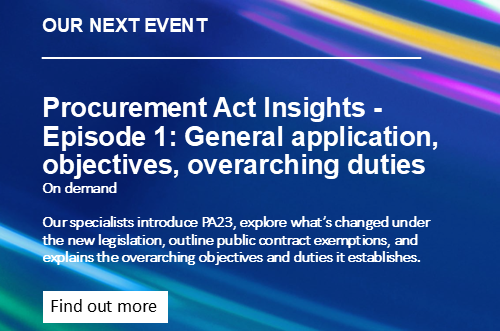- Details
Remediation Orders: What you need to know
![]() Joe Walker and Helen Arthur explain what a remediation order is and look at two recent cases to see how the First-Tier Tribunal has interpreted the framework for these.
Joe Walker and Helen Arthur explain what a remediation order is and look at two recent cases to see how the First-Tier Tribunal has interpreted the framework for these.
The Building Safety Act 2022 (“BSA”) requires landlords, developers and their associates to remediate historical defects that pose a building safety risk in certain buildings.
As part of the package of leaseholder protections implemented by the BSA, the First Tier Tribunal (“FTT”) is able to make Remediation Orders (“RO”).
What is a Remediation Order?
Section 123 of the BSA provides “interested persons” with a right to apply for a RO requiring a relevant landlord to remedy specified relevant defects in a specified relevant building by a specified time.
“Interested persons” include:
- the Building Safety Regulator;
- a local authority;
- a fire and rescue authority; and
- a person with a proprietary interest in a relevant building (such as a leaseholder).
In addition, from August 2023, The Homes and Communities Agency was also added to the list of interested persons.
The property needs to be a “relevant building” which means a building or any self-contained part of a building in England containing:
- at least two dwellings; and
- with a height of 11 metres or five storeys or more.
Certain buildings are excluded, such as leaseholder-owned buildings or those on commonhold land. The definition of a ‘relevant building’ for the purposes of RO’s is not the same as the definition of Higher-Risk Buildings set out in the BSA.
An RO is made against the “relevant landlord” who is a landlord under a lease of a relevant building who is required to repair or maintain anything relating to the relevant defect. This therefore captures management companies, freeholders and superior landlords if they have repairing/maintenance obligations.
An RO needs to remedy a “relevant defect”. This is a defect arising as a result of anything done (or not done) in connection with the relevant works and causes a building safety risk. A ‘building safety risk’ is defined widely and includes risks to the safety of people in or about the building arising from the spread of fire, or the collapse of the building or any part thereof.
Recent RO decisions
Two recently reported decisions provide welcome insight into FTT’s approach to RO applications in this developing area[1].
Culpin and Pring v Stockwood Land 2 Limited
Two leaseholders in Orchard House, a building in Bristol built in the 1960s and converted from an office block into 54 flats, sought an RO against their landlord.
They alleged the landlord had failed to address various aspects of a Fire Risk Appraisal of the External Wall (“FRAEW”) undertaken in May 2021 which identified: the need to implement a high-level risk management system; fire-stopping inadequacies; and the need to replace infill and spandrel panels with non-combustible materials.
The FTT was satisfied that these were relevant defects causing a building safety risk. Accordingly, it made a RO requiring the landlord, who took no part in the proceedings, to complete all works as required to satisfy recommendations in the FRAEW report.
As to timescales, the FTT noted there had been little evidence on the issue. Taking into account the unchallenged position of one of the leaseholders, and applying its own expertise, the FTT ordered the works were to be completed within six months.
Mistry and others v Wallace Estates Limited
A group of 14 leaseholders at Centrillion Point, a large 12-storey block in Croydon containing 189 flats, applied for an RO against their landlord alleging various defects including to entrance and internal doors, compartment walls and floors, and structural fire protection.
There was (by the date of the hearing at least) no dispute that a RO should be made, nor as to the defects which should be the subject matter of it. The remaining two issues in dispute were:
Precise terms of the RO – the leaseholders wanted it to be highly specific, whereas the landlord sought a more general order to not fetter how it carries out the works. The FTT decided that whilst the RO should be “sufficiently precise” so that the landlord knows what it must do to remedy the relevant defects (and for enforcement purposes before the county court), it need not be “prescriptive” regarding the works necessary to remedy the relevant defects.
Time limit for remediation – the leaseholders sought completion of the works within one year, the landlord proposed two years. After considering the only direct evidence on the issue from the Respondent and noting the timescale “should not be unrealistic or unachievable”, the FTT met the parties in the middle and stipulated that the works be completed within 18 months.
Where does this leave us?
As well as continuing to show the FTT’s readiness to grant ROs in appropriate cases, these decisions provide helpful discussion and application of the statutory requirements that parties, and their representatives should consider when preparing or responding to future applications in this area.
The FTT is certainly starting to apply its interpretation on what amounts to specific ‘relevant defects’ and not needing to include, within an order, detailed steps to be taken to achieve the remedying of that relevant defect. The FTT is clearly trying to take a pragmatic approach here, acknowledging that a general order is more appropriate.
[1] There has been one prior reported RO decision: Waite and Ors v Kedai Limited, in which a RO was made.
Joe Walker is a Legal Director and Helen Arthur is a Senior Professional Support Lawyer at Sharpe Pritchard LLP.
For further insight and resources on local government legal issues from Sharpe Pritchard, please visit the SharpeEdge page by clicking on the banner below.
This article is for general awareness only and does not constitute legal or professional advice. The law may have changed since this page was first published. If you would like further advice and assistance in relation to any issue raised in this article, please contact us by telephone or email
|
Click here to view our archived articles or search below.
|
|
ABOUT SHARPE PRITCHARD
We are a national firm of public law specialists, serving local authorities, other public sector organisations and registered social landlords, as well as commercial clients and the third sector. Our team advises on a wide range of public law matters, spanning electoral law, procurement, construction, infrastructure, data protection and information law, planning and dispute resolution, to name a few key specialisms. All public sector organisations have a route to instruct us through the various frameworks we are appointed to. To find out more about our services, please click here.
|
|
OUR RECENT ARTICLES
December 10, 2025
Sharpe Pritchard appointed to £60m London Boroughs’ Legal Alliance frameworkSharpe Pritchard, one of the UK’s leading public law firms, has been re-appointed to the London Boroughs’ Legal Alliance (LBLA) Solicitors Panel.
November 20, 2025
Strengthening the standards and conduct framework for local authorities in EnglandJames Berry offers his insight into how the proposed changes to standards and conduct rules will affect local authorities.
November 04, 2025
Procuring and operating open frameworks under the Procurement Act 2023Chantelle Pink offers advice to authorities on open frameworks and how to procure them.
October 31, 2025
Building Solar – 5 Top Tips for Solar Farm Construction ContractsSolar farm construction contracts are in focus following fascinating insights into the continuing global uptake and expansion of renewables, and particularly solar, within the 2025 mid-year report of Ember, a global energy think tank.
|
|
OUR KEY LOCAL GOVERNMENT CONTACTS
|
||
|
Partner 020 7406 4600 Find out more |
||
|
Partner 020 7406 4600 Find out more |
||
|
Rachel Murray-Smith Partner 020 7406 4600 Find out more |







 Catherine Newman
Catherine Newman
